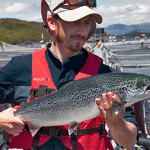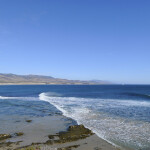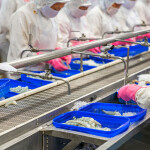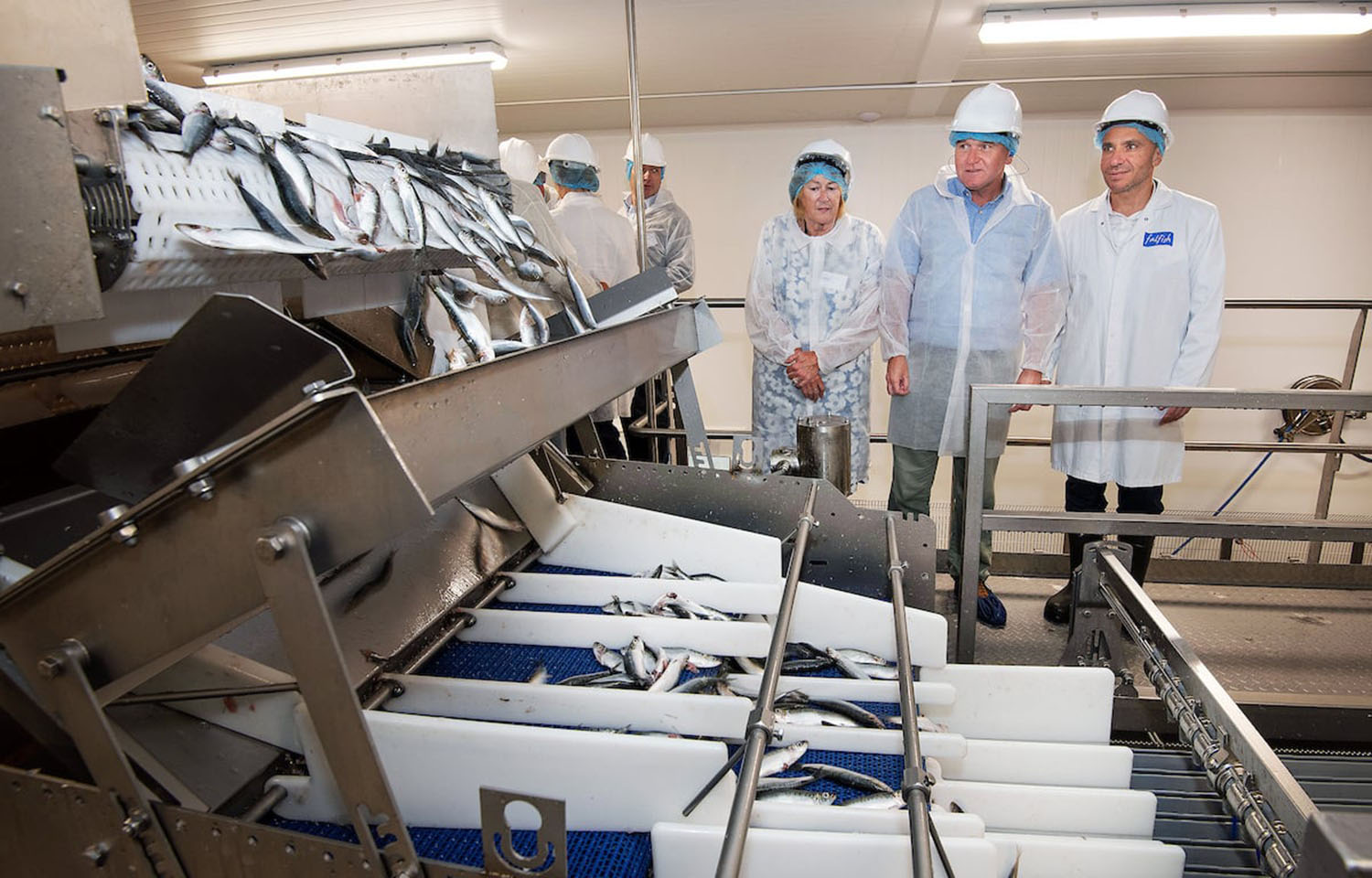SeafoodSource is closely following seafood processing and equipment innovation by compiling a regular round-up of updates from the sector.
- Canada’s Department of Fisheries and Oceans (DFO) has announced CAD 225 million (USD 163 million, EUR 150 million) in investments in small craft harbors on the country’s Atlantic coast.
The DFO announced it will invest CAD 50 million (USD 36 million, EUR 33 million) in small craft harbors in the Gaspé Peninsula of Quebec, CAD 74 million (USD 53 million, EUR 49 million) in small craft harbors in Nova Scotia, and CAD 101 million (USD 73 million, EUR 67 million) in small craft harbors and search and rescue capacity in Newfoundland and Labrador.
Canada Minister of Fisheries, Oceans, and the Canadian Coast Guard Diane Lebouthillier said that small craft harbors are “the backbone of our vibrant fishing communities across the country” and that Canada needs to invest in the harbor infrastructure needed for those harbors to cope with climate challenges.
“It is not only a question of economic development but also of food security,” Lebouthillier said. “With Budget 2024, we are giving ourselves the means to achieve our ambitions, by providing our fish harvesters with modern harbors, where their children, grandchildren, and great grandchildren will perpetuate our most beautiful maritime traditions.”
All three investments will come over three years and will go toward multiple different pieces of infrastructure, including the main breakwater at the Rivière-au-Renard wharf, which was damaged in December 2022 following a severe winter storm; five harbors in Nova Scotia that sustained serious damage from Hurricane Fiona: Cape John, Ingonish (Macleods Point), Judique (Baxters Cove), Little Judique Ponds, and New Waterford; and 10 harbors in Newfoundland that also were damaged by Hurricane Fiona.
- Morrisons’ food manufacturing supplier Myton Food Group has opened a new fish-freezing center that the company said is the largest of its type in the United Kingdom.
The new Falfish Freezing Centre, opened by Myton’s subsidiary Falfish in Cornwall, England, cost GBP 12.8 million (USD 16.3 million, EUR 14.9 million) to develop and can freeze 112,000 fish per hour. According to a release from Morrisons, plans for the facility began in 2021 after Morrisons acquired Falfish, and the investment is the largest single investment made in Cornwall’s shoreside in a generation.
“Over 80 percent of the fish and shellfish sold in Morrisons stores comes from our seafood operations in Cornwall, where we buy directly from local fishermen,” Myton Food Group Managing Director Adnrew Thornber said. “Opening the U.K.’s largest fish freezing center not only strengthens our position as one of Britain’s biggest food makers but also significantly grows our seafood export business.”
- Ace Aquatec and Aqualande-owned trout farmer Piszolla have partnered to install one of Ace Aquatec’s “Humane Stunner Universal” fish stunning solutions – the first stunning system employed by Piszolla.
The new stunner will be used at Piszolla’s Alba de Tormes, Salamanca, Spain-based trout farm. Ace Aquatec said that the installation is the first venture from the company into the Spanish market.
Piszolla said the installation will help the company minimize handling requirements – reducing stress for the fish – and enable a more efficient and humane harvesting process.
"The installation of Ace Aquatec's trout stunner will enable us not only to streamline our operations, but also to break new ground for animal welfare standards in Spain,” Piszolla Regional Manager Julio Hernandez said in a release. “We aspire to be pioneers of humane harvesting standards in this region, and this technology is set to have a huge impact for us in terms of generating high-quality, high-welfare, and sustainable products for consumers globally."
- Packaging company ProAmpac has launched a new polypropylene-based food tray that it said offers a more sustainable solution for foodservice and grocery markets.
The new tray, dubbed the Proactive Recyclable Fresh Tray FT-1000 – or FT-1000 for short – is classified as Plastic #5 and is approved for curbside recycling.
"ProActive Recyclable Fresh Tray FT-1000 offers grocery and food retail markets a robust, sustainable packaging solution that aligns seamlessly with their operational needs,” Pascal Labrie, the vice president and general manager of ProAmpac’s tray business, said in a release. "By adopting the FT-1000, these sectors can meet their sustainability goals without compromising performance or customer satisfaction. This tray is a significant step forward in our commitment to supporting the food industry's environmental initiatives and advancing recyclable packaging choices."
The company said that the new tray is 90 percent air – reducing its material footprint – making it is a more sustainable alternative than other materials. It is also durable enough to maintain line speed on wrapping equipment, and has water and grease resistant.
“With robust impact resistance and outstanding stiffness, this tray supports a variety of food service and grocery applications such as meat, seafood, dairy, and produce,” ProAmpac said.
- Landcatch – Hendrix Genetcis’ brand for salmon breeding – has earned the right for salmon fed insect-based protein to carry the French “Label Rouge” quality label.
Label Rouge covers a number of different compliance and quality standards, including specifications for what type of feed the salmon carrying the label are allowed to eat. The label is widely used in the Scottish salmon industry and is part of the industry’s overall marketing strategy in Europe.
According to a press release from Protix – an insect feed producer – the endorsement was the result of an initiative between INAO, the French Label Rouge Regulatory authority; Landcatch; Scottish Quality Salmon, which acts as a management organization for Scotland’s almon producers’ and Protix.
- UVAXX and A*STAR Infectious Diseases Labs have successfully developed a new vaccine that can defend against Scale Drop Disease Virus (SDDV) in Barramundi.
According to a post on UVAXX’s LinkedIn, the new product is is a novel epitope-based vaccine that can help prevent SDDV, which can cause high levels of mortality in barramundi pens.
“Until today, there are no commercially available solutions,” UVAXX said. “We are proud to be on track to be the first to bring the solution to market.”
The vaccine was developed with support from the Singapore Food Agency, National Research Foundation Singapore, and ID Labs Senior Scientist Ken Loh Zhixuan and A*STAR Senior Fellow Professor Laurent Renia.
- Constellation Cold Logistics has entered into an agreement to acquire Agri-Norcold, the company announced in a release.
The purchase – the details of which were not disclosed – represents Constellation’s first entry into the Danish market. Aalborg, Denmark-based Agri-Norcold operates 10 facilities in Denmark with a total of 865,756 cubic meters of frozen storage.
"The addition of Agri-Norcold to our network opens up strategic opportunities in Denmark and strengthens Constellation's leading position in the Nordics, where we already enjoy strong partnerships and growth opportunities with our customers in Norway and Sweden,” Constellation CEO Carlos Rodriguez said.
Since 2012, Agri-Norcold has been jointly owned by TA-Logistics and Danish Crown – a third-party logistics company and a food-processing company.
"Agri-Norcold's long standing relationship with Danish Crown and several other meat, dairy, seafood and packaged food producers positions the company well for future growth,” Rodriguez said. “Denmark is one of the largest net exporters of food products in Europe, and this transaction will allow us to continue to grow with new customers, as well as many others that we already serve across the Constellation network."
- Soy product company VitaPro has invested USD 2 million (EUR 1.8 million) in its Nicovita plant in Milagro, Ecuador.
VitaPro announced a USD 80 million (EUR 73.2 million) investment in Nicovita – the company’s shrimp feed producer – in 2022. This latest investment will introduce logistical improvements and enhance the traceability of its shrimp feed supply chain, Vitapro said.
The investment will train its personnel in process improvement, employ new inventory management software and racking systems, and optimize storage capacity. The company said it will allow its staff to achieve better results with fewer resources.
“With these innovations, VitaPro not only enhances the efficiency of its operations but also raises the service standard across the entire aquaculture industry,” VitaPro Logistics Manager for Ecuador and Peru Diego Viera said. “We are setting a new precedent for customer service and environmental responsibility while paving the way for traceability in a sustainably growing industry.”
- The Sustainable Aquaculture Innovation Centre (SAIC) has granted new funding to a consortium of researchers working on a tool to predict the dispersion of sea lice in water to enhance fish health in salmon aquaculture operations.
The new project is dubbed SAVED – Sustainable Aquaculture: Validating Ectoparasite Dispersal – and includes several project partners including: the University of Strathclyde; Mowi Scotland; Scottish Sea Farms; Bakkafrost Scotland; the Scottish Government’s Marine Directorate; the Norwegian Institute of Marine Research; Firum, Aquaculture Research Station of the Faroes, The NW Edge, and Scottish Environment Protection Agency (SEPA) as an observer, SAIC said.
The goal of the project is to create a universally-accepted tool for comparing across sea lice models and data, which could lead to better predictions of the potential risk to wild fish populations from sea lice. The model will include a number of elements such as winds and tides, how sea lice move in water, and how they react to light exposure, SAIC said.
“Different sea lice dispersal models use varying complex mathematical techniques, but it is important to ensure that the same set of input data returns a valid result, no matter which product is used,” Meadhbh Moriarty, a senior aquatic epidemiological modeller for the Scottish Government’s Marine Directorate, said. “To reduce the variability, we are creating a bespoke Python script that can be applied to each model and ensure it is fit for purpose.”








